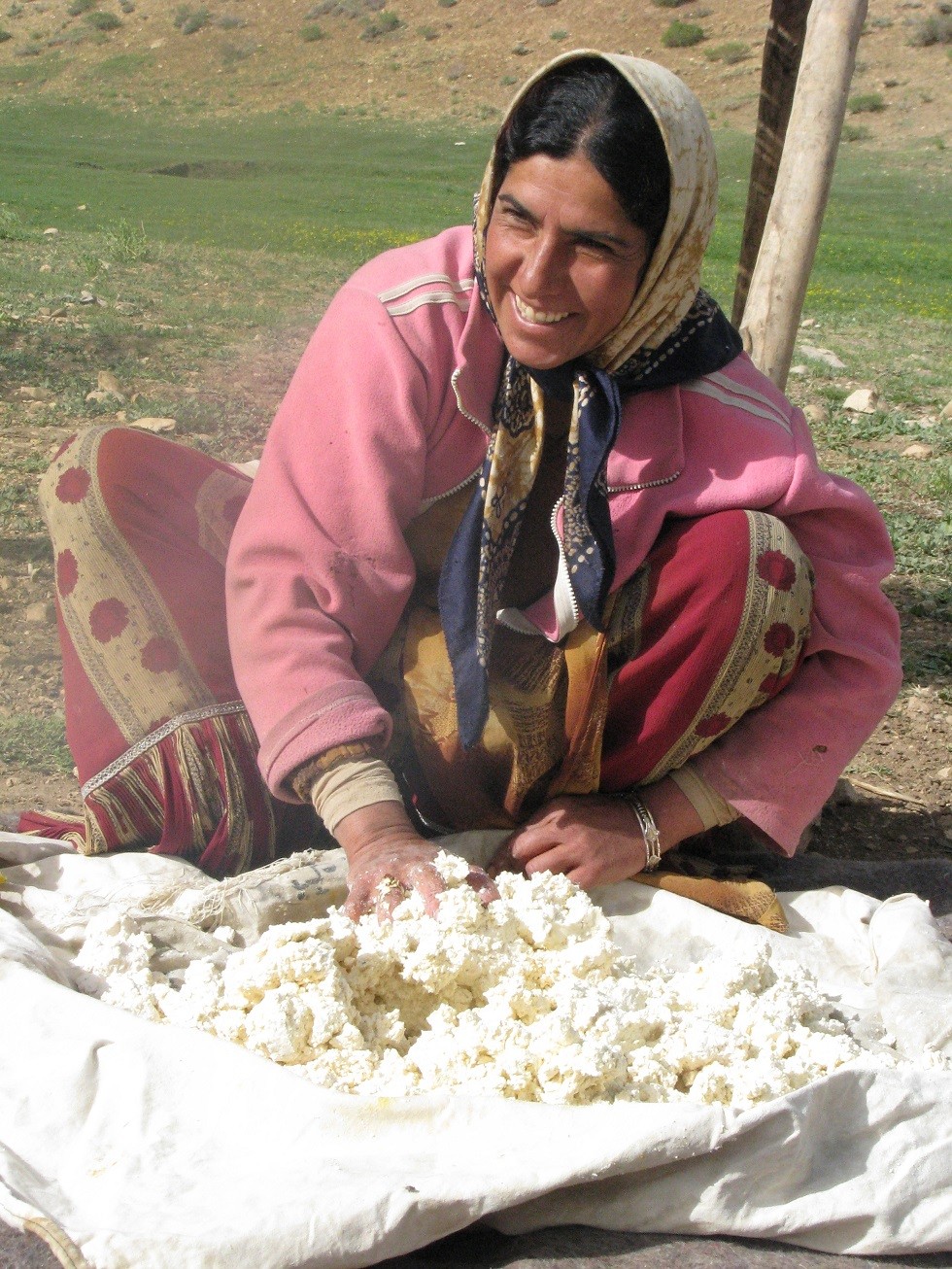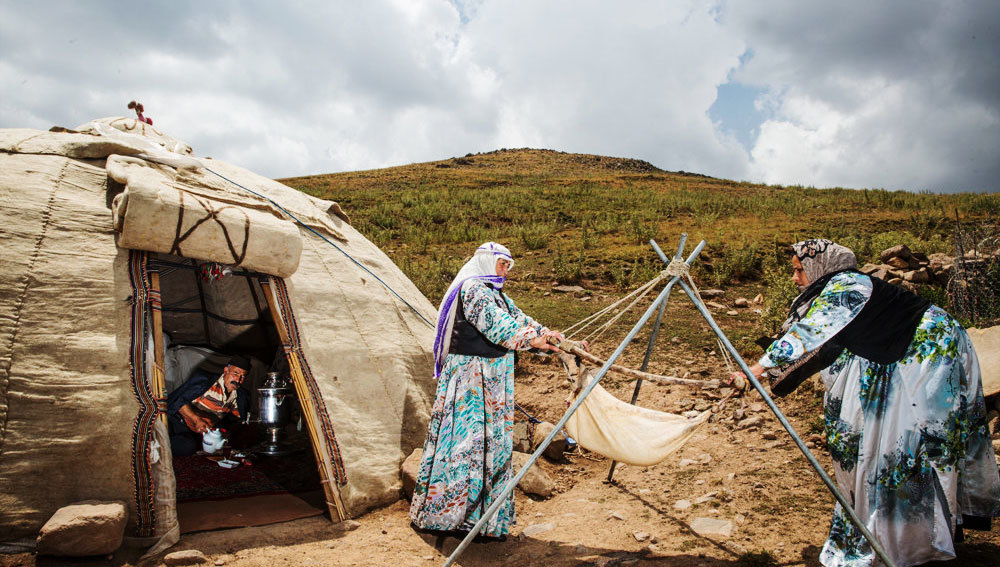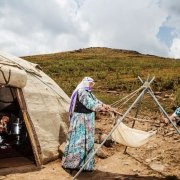Nomad Tradition
Nomad Tradition
Part 1: Sar Agha seyyed Village
Between the nomad’s tradition (migration by season)(summer and winter quarters) and settlement.
In the seclusion of Zagros, which known as a famous mountain range of Iran, the habitation of the settled Bakhtiyarian rises, that still undiscovered by the world.
Like honeycombs, one house get related to each other as they offer one of the country’s greatest sights. Living in this village called “Sar Agha Seyed” is a very traditional way of giving up nomadism. To reach there, we have to pass along a meander bumpy gravel road that leads us through the massive mountainous landscape of the Zagros straight into the heartland of the Bakhtiyarian, one of the country’s traditional way of living of nomadic populations.
Cattle herds already passing by and the pitched camps are seen and testify a different life of a traditional tribe; Bakhtiyaries, which seems to have been conserved here over the centuries.
Against the vertiginous view into the frightening abyss and the never-ending curves only focusing on the magnificent mountain landscape with the over 4,000-meter-high Zard Kooh as the coronation of the Zagros would be attractive. And now, a small settlement of Bakhtiyarian still tries to outstare the unique beauty of the landscape and show its influence on the nature.

After hours of driving, the destination is waiting for us as the most beautiful villages in the world.
Everyone can confess that the world does not seem to have become attentive to this secluded manifestation of Bakhtiyarian culture and architecture.
Thanks to this picturesque village, which little houses seem to spring from the mountainside, the Bakhtiyary tribe that decided to settle down with the foundation stone of this settlement has been very prosperous.
The local people proudly and enthusiastically tell the story of how this decision came about. The nomadic life of the Bakhtiyarian meant that every spring they pulled their herds to the high-altitude summer pastures, before returning to the lower winter camps in the fall. One summer, in the midst of the lush pastures of Zagros, the head of the tribe died. In the place where this old and holy man has rested in peace, the members of the tribe began to build a sanctuary and consequently more and more houses.

nomad
They didn’t tend to leave the resting place of the holy man they worshiped so much, and from now on, this settlement has become their year-round homeland, and all the people living here today are deeply connected to the deceased saint, who is supposed to be their common ancestor. History pervades and is omnipresent in the village and the sanctuary is cherished and maintained by the whole community. Each year, every family resides with each other to go there to worship also to protect the key to the holy of holies.

nomad
Breakneck Migration
The Bakhtiyarian belong to the Lor tribes and their Bakhtiyari dialect is of the Lori language.
Also we can witness a province of the country Iran, still bears the name of this nomadic population group. Chahar Mahal and Bakhtiari is the heartland of the Bakhtiyarian. Around 50,000 nomads of this tribe still live like their traditional nomadic life of their ancestors but the tendency is dropping. But the obvious point which we can see on the way to the village is that we will meet those Bakhtiyaries who continue to maintain their nomadic culture.
The great crossing of the Zagros passes is considered one of the most spectacular migrations in the world which is done twice a year by the traditional and nomadic Bakhtiyarian. When the pastures in the Zagros Mountains are covered in snow, the cattle herds have long been in the more southerly plains of Khuzestan between Lali and Izeh. The fact that the pastures of the winter camps, is being used more and more for agriculture, causes increasing some conflicts between the last nomadic and the peasant populations. The traditional nomads, marched on the Zagros, which lasts three weeks, are already largely a point of the past. The great dangers of such a migration for humans and animals happen for most Bakhtiyarian. After all, there is now also the opportunity to manage the route with an eight-hour drive. Nevertheless, a few families dare to march each year with packed donkeys and little sheep in their arms. Even the youngest ones will join in the hike. Wrapped in cloth, so babies on the back of their mothers are worn the long way.
Flock of sheep in the Zagros Iran

Conflicts and everyday life
Every morning, when the locals gather on the rooftops of the houses and nestled in each other, the little village comes to life again to do the first works of the day. Then the consistent strong women carry heavy loads across the whole village and the elders sit together and talk about upcoming village decisions.
The mayor, himself who has not be an old gentleman and not more than his mid-40s either. This fact that in his younger years he was honored to make decisions for the whole village, he has done it with his elementary education. It was a main condition that all the village community had agreed that the mayor should at least have a basic school leaving certificate in view of his committee. The slightly too modern-looking man, who now officially has the last word, is in the duty to solve this trekking conflicts within the village community. A newly built house in the middle of the dense settlement is somewhere once cause for displeasure. A whole order of structure gets mixed up, when there is a new house and roof there, where the snow covered everywhere.
Child in the zagros
With the harsh winters in the Zagros, the burden of snow is a hard work and the all the people trying for the elimination of the danger but easy given the densely interlaced houses. While the families quarrel at one end of the village, bread is made in other houses in a dark bakery. There is a lot of work behind the idyll of the village facade. Yoghurt is made, wild animals are hunted and houses are maintained.
Outlook – A question of the generation
As so often elsewhere, Iran has a large gap between the nomadic / semi-nomadic and urban populations. The position of nomadic people in the Iranian society is something we can talk about, but the satisfactory for the Bakhtiyarian is a question. Especially the people from the big cities like Isfahan face the Bakhtiyarian with a certain dismiss. Their simplicity and their low level of education are important, they say. It is undisputed that two completely different worlds of life clash and the world-wide common urban-rural contradiction is intensified when they believe as a nomadic tradition in the background. And indeed, these different kinds of living worlds meet more and more often, because many of the younger Bakhtiyarian break with the nomadic or even traditional life and move to the city. After all, this younger generation not only faces the nosy city population, but also has a strong headwind from its own family. A certain generation conflict is not avoidable when the older family members insist on nomadic way of life or at least small-town life and the younger tend to live in the city.
The new opportunities now which young people face, make the conflict more exacerbated. Since the 1960s, nomadic children have also been taught by teachers, some teachers drive long distances to teach reading, writing and arithmetic to children. Due to the elementary education they receive, many of them dream to continue studying or even study in urban schools in cities. Whether it will already be possible for the dreaming children, who still guard goats today or jump from roof to roof in the village, to remain on this path, make the children uncertain. And especially the girls are not allowed to make this decision alone, at most they have the luck to marry a man who wants to follow the same path as they do, given the strictly patriarchal structured society. All these questions and developments take place behind the idyll of the village and the mountain landscape. This fact that at least the building inside of the village remains as it is, and does not keep up with the times, is already provided by Iranian authorities. The Iranian preference for lovely mountain villages and the appreciation of the cultural assets of the country, it is probably due to the fact that the Bakhtiyarians traditional image of the village (more) may change. Therefore, more modern and larger houses are built only outside the village center. Thus, for the next few years, the uniquely beautiful view of the village is seen.



